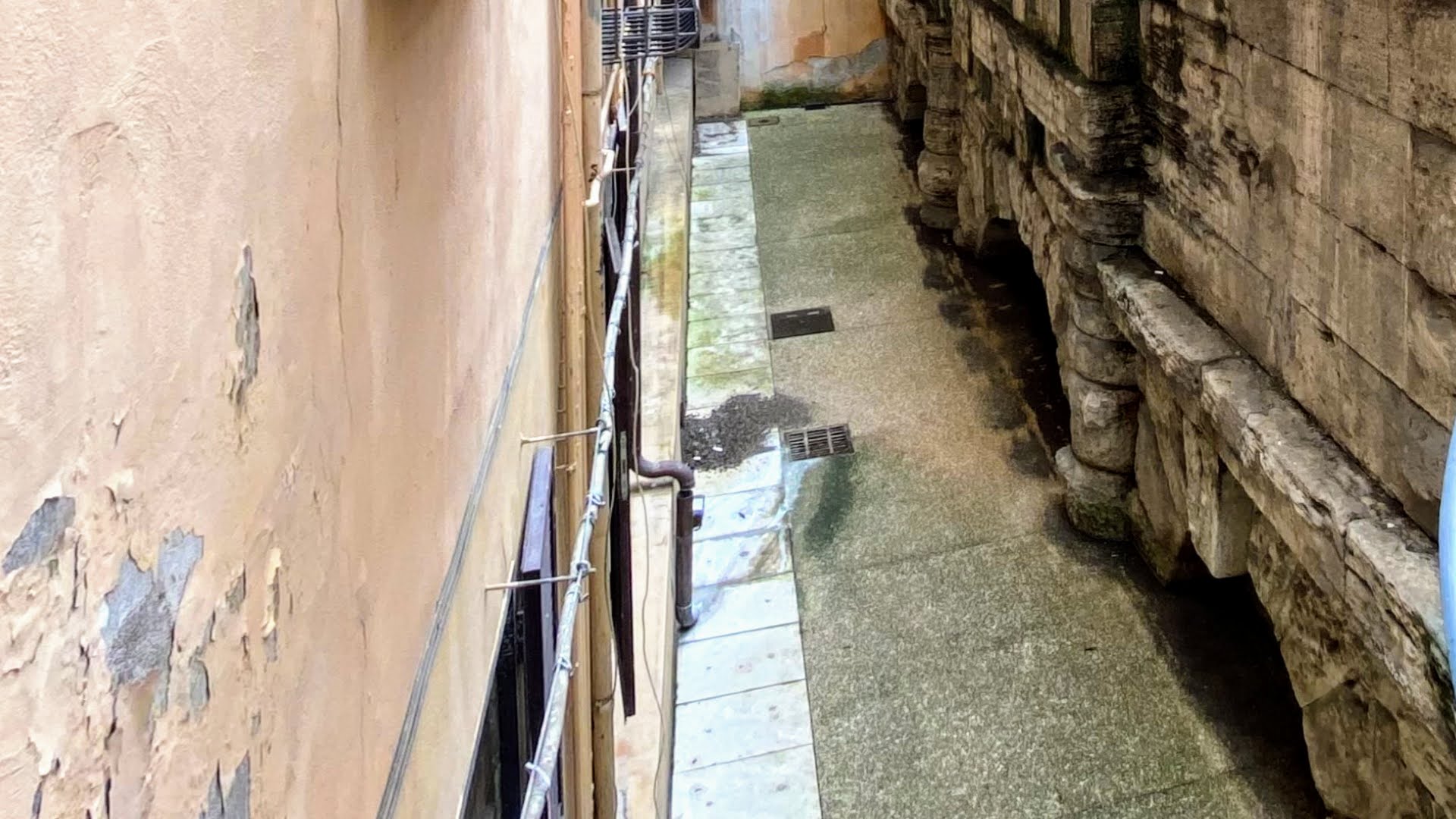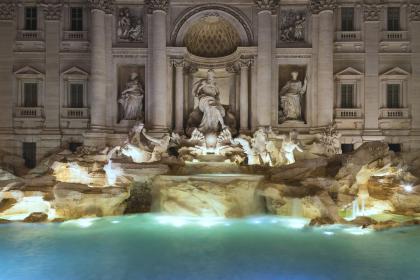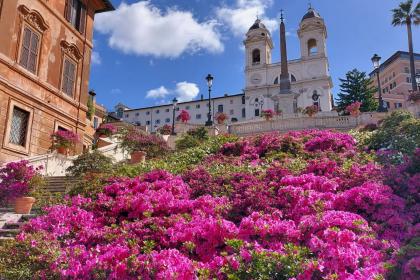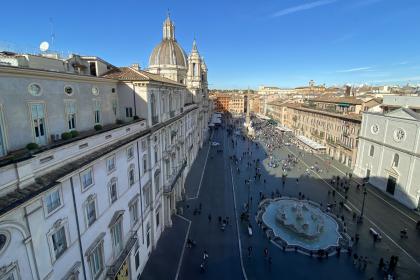
The architectural remains in Via del Nazareno constitute the most noteworthy still visible section of the urban route of the Vergine aqueduct.
Built in 19 BC at the behest of Agrippa, the Aqueduct entered the city walls at the level of the Muro Torto. It ended with a monumental fountain in the Baths of Agrippa from the source, located at the farmhouse of Salone at Via Collatina Km. 10,50.
Among all the aqueducts, extraordinary works of genius of the ancient Romans, the Vergine Aqueduct is the only one still in operation: even today, after millennia, it feeds some magnificent Baroque fountains in Rome, including the Trevi Fountain, the fountains of Navona Square, and the Barcaccia at the slopes of the Spanish Steps.
Right at the height of the Spanish Steps, the aqueduct, which up to that point was underground, came above ground and continued on raised arches in via del Bufalo. Also these are visible today.
The stretch on via del Nazareno consists of an archway built at the behest of Claudius in 46 BC astride an ancient road of Regio VII: the pillars and the arch are made up of an ashlar element made with large blocks of peperino while the frame, now lost, must have been in travertine.
The dedication, which attributes the construction work to Claudius, is still clearly visible on both sides of the structure and says: TI(BERIUS) CLAUDIUS DRUSI F(ILIUS) CAESAR AUGUSTUS GERMANICUS PONTIFEX MAXIM(US) TRIB(UNICIA ) POTEST(ATE) V IMP(ERATOR) XI P(ATER) P(ATRIAE) CO(N) S(UL)DESIG(NATUS) IIII ARCUS DUCTUS AQUAE VIRGINIS DISTURBATOS PER C(AIUM) CAESAREM A FUNDAMENTIS NOVOS FECIT AC RESTITUT (Tiberius Claudius, son of Drusus, Caesar Augustus Germanicus, Pontifex Maximus, vested with the tribunician power for the fifth time, acclaimed emperor for the eleventh time, father of the country, consul designated for the fourth time, rebuilt and restored from the foundations of the arches of the Acqua Vergine aqueduct, damaged by Gaius Caesar (Caligula).
The quotation probably refers to the construction of an Amphitheater commissioned by Caligula but never completed, which had partially damaged the Aqueduct. Upon the death of Caligula, Claudius, his successor, demolished the Amphitheater to restore the Aqueduct.
When emperor Hadrian also repaired the entire route, the arch of the Nazareno was reinforced with masonry cladding, and the duct was raised by more than 1 meter compared to the original level in a later period.
The Trevi Fountain

 Condividi
Condividi
The most famous of the Roman fountains: a jewel of water and stone
Piazza di Spagna

 Condividi
Condividi
Navona Square

 Condividi
Condividi
The most iconic square of Baroque Rome
Information
Admission to the monument is allowed to groups and associations, with their own guide, who must make a reservation at 060608 (daily, 9.00 - 19.00).
Maximum 20 people per visit.
For individual visitors, who must also make a reservation at 060608, individual visits are also possible according to a schedule specified on the page > Monumenti del territorio
 Condividi
Condividi
Location
To find out about all accessibility services, visit the Rome accessible section.












































